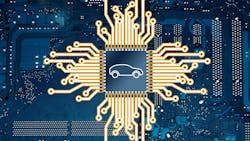EMC Testing: Can It Untangle the Future of In-Car Connectivity? (Download)
On the road to higher levels of autonomous driving, automakers are integrating more and higher-resolution sensors into their vehicles. This has resulted in an unprecedented number of high-bandwidth links under the hood, many of them used to connect safety-critical advanced driver-assistance systems (ADAS). The problem, though, is that each of them is highly susceptible to the effects of electromagnetic interference (EMI).
To ensure electromagnetic compatibility (EMC) under the hood, automakers have long leaned on standard tests developed by industry groups, including CISPR, ISO, and SAE, to enhance the reliability of the cables that keep the car’s subsystems connected. These tests were developed in the era of legacy connectivity, when frequency topped out at the tens of MHz, with maximum data rates of 100 MB/s.
